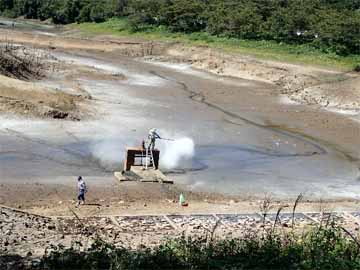R E L E A S E
| • A Research Article was Published on Illegal Restocking of The Blackbass Suspected after Eradication (June 30, 2021) Title Where are they from? – Recurrence of largemouth bass Micropterus salmoides in a farm pond two years after eradication draw down Abstract Two invasive exotic fish species, largemouth bass Micropterus salmoides and bluegill Lepomis macrochirus were eradicated by drawing down the Terukoshi farm pond, Kurihara, Japan in September, 2018. These two species were absent the following August, but largemouth bass juveniles recurred in June, 2020. Are they offspring of bass that survived the eradication activity or of illegal release after re-impoundment? Aided by various assumptions such as current biomass, brood size, mortality, growth, etc., juvenile biomass on the sampling day, number of nests, parents in 2020 spawning season, the assumed surviving bass were respectively estimated about 7,000, two, two and eight (c.a. 35 cm TL), or if the assumed survivors were young-of-the-year, their number was estimated about 88 at the time of drainage. These numbers of eradication survivors are unlikely because the pond was drained with only a very narrow streak of running water left and quick lime was spread to reduce the chance of survival. In case of illegal release, five to eight adults of about 38–22 cm TL at release eight months before were estimated to be needed in order to realize the juvenile biomass at our sampling. Suspected outlaw angler(s) might have exceptional angling skill to catch a number of basses at a time under the recently difficult angling conditions, or have an illegal bass retention facility to gather enough basses for such a release.   Journal Izunuma-Uchinuma Wetland Researches 15:107–120 Doi 10.20745/izu.15.0_107 |

